30+ Sample SaaS Agreement
-

SaaS Agreement Template
download now -
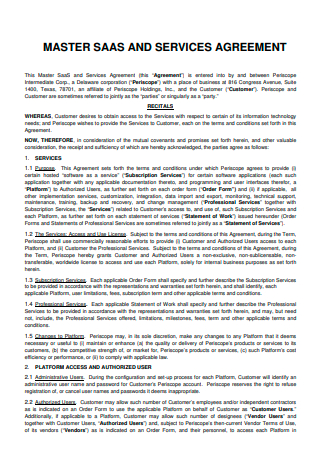
Master SaaS and Services Agreement
download now -
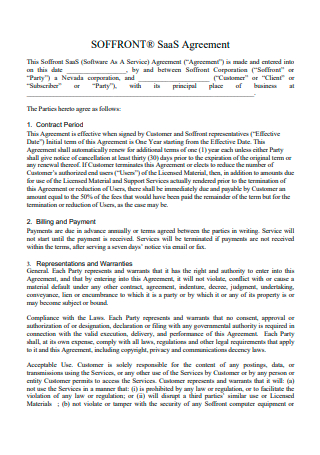
SaaS Agreement Example
download now -
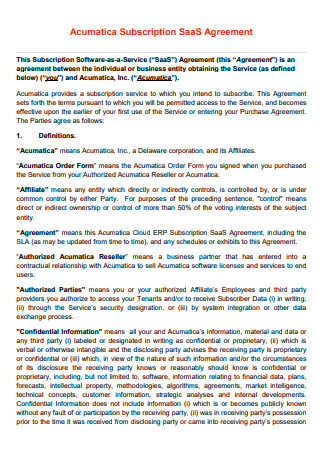
Subscription SaaS Agreement
download now -
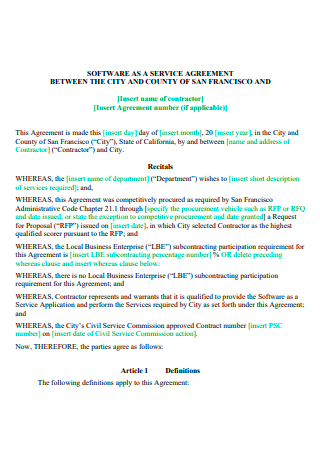
Printable SaaS Agreement
download now -
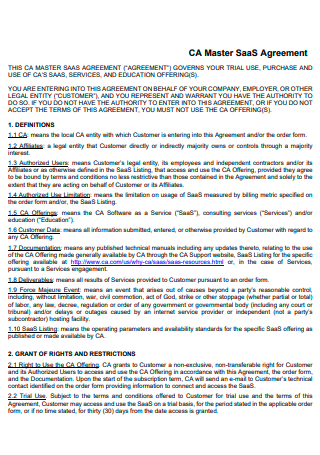
Master SaaS Agreement
download now -
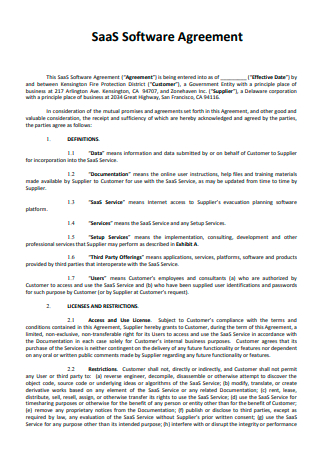
SaaS Software Agreement
download now -

SaaS Agreement in PDF
download now -
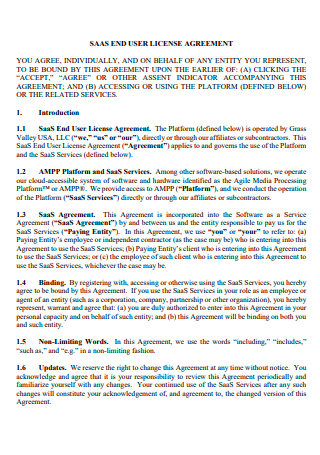
SaaS End User License Agreement
download now -
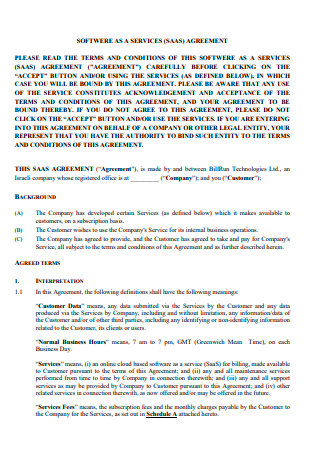
Basic SaaS Agreement
download now -
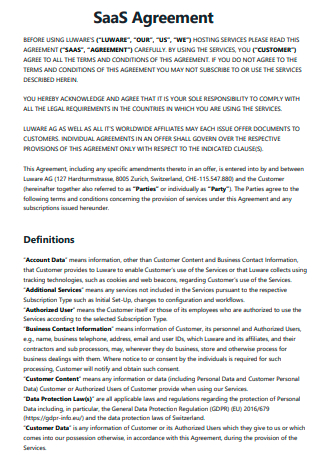
Standard SaaS Agreement
download now -

SaaS Software License Agreement
download now -
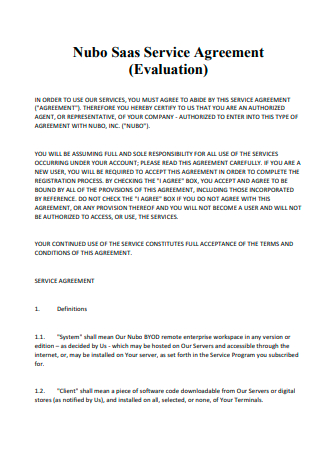
SaaS Service Agreement Evaluation
download now -
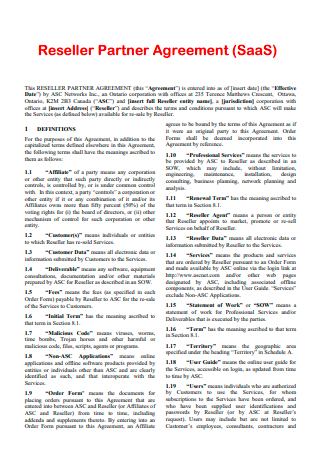
SaaS Reseller Partner Agreement
download now -
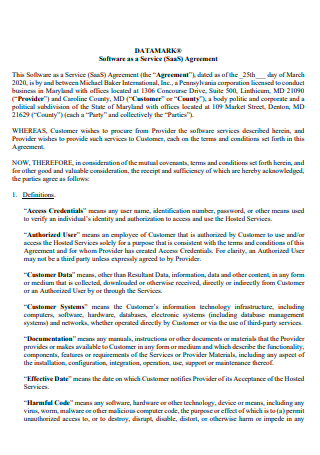
Formal SaaS Agreement
download now -
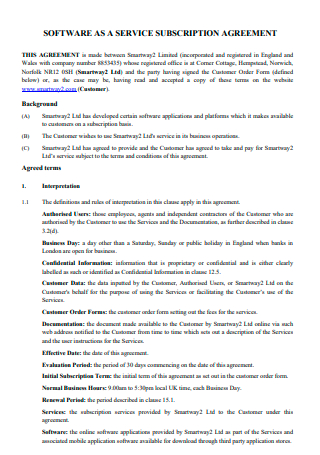
SaaS Subscription Agreement
download now -
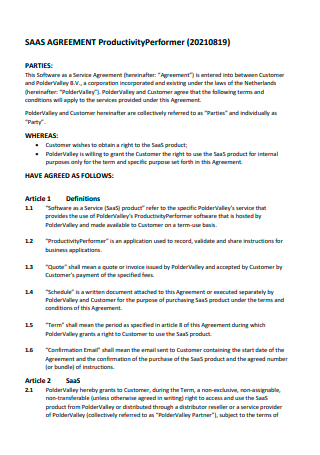
SaaS Agreement Productivity Performer
download now -
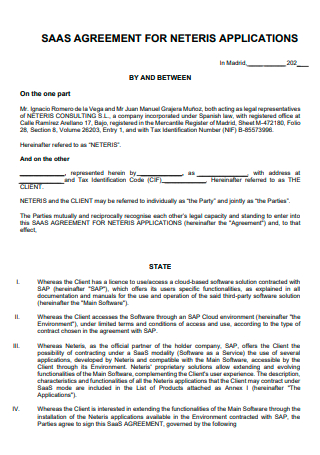
SaaS Agreement For Applications
download now -

SaaS Services Agreement
download now -
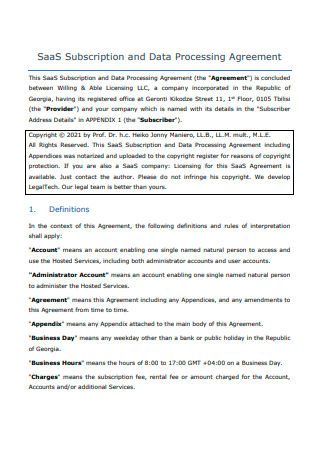
SaaS Subscription and Data Processing Agreement
download now -
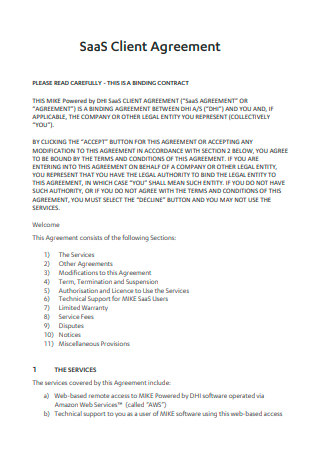
SaaS Client Agreement
download now -
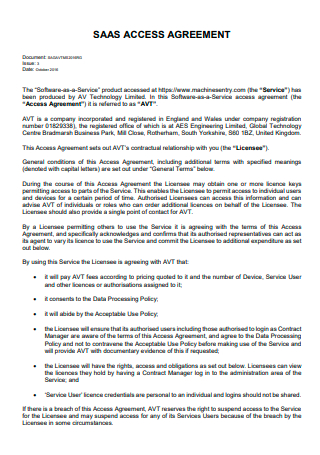
SaaS Access Agreement
download now -
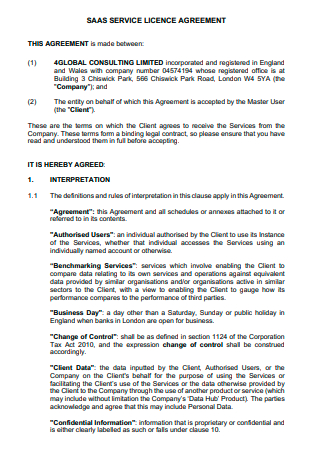
SaaS Service Licence Agreement
download now -
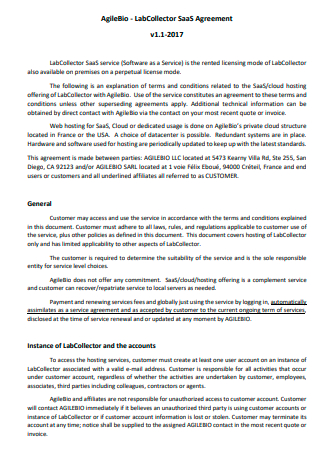
Lab Collector SaaS Agreement
download now -
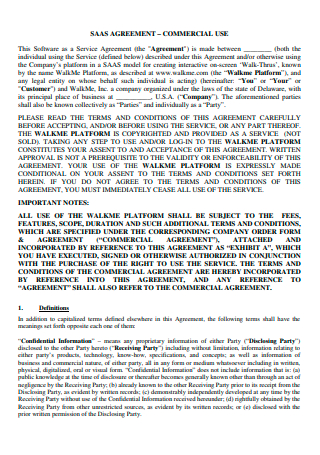
Commercial SaaS Agreement
download now -
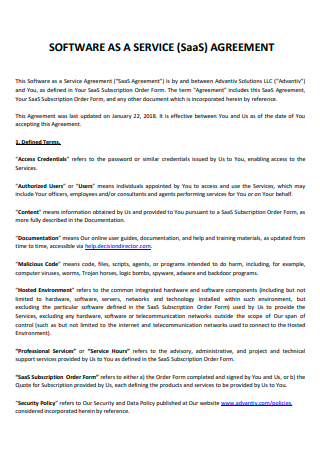
SaaS Agreement Format
download now -

SaaS Beta Agreement
download now -
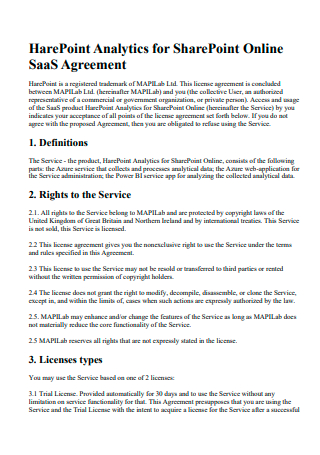
Online SaaS Agreement
download now -
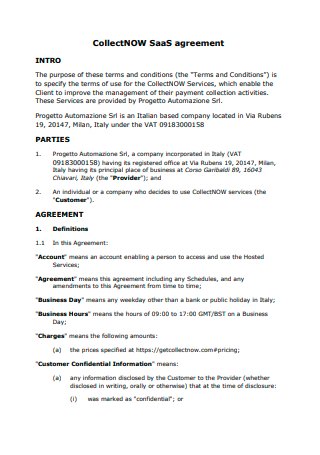
Simple SaaS Agreement
download now -
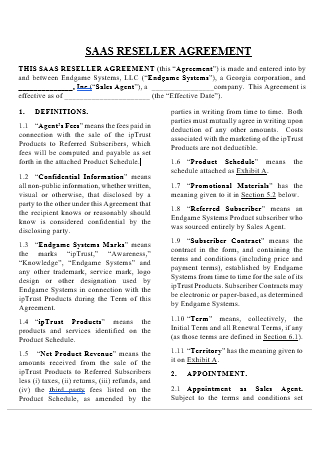
SaaS Reseller Agreement
download now -
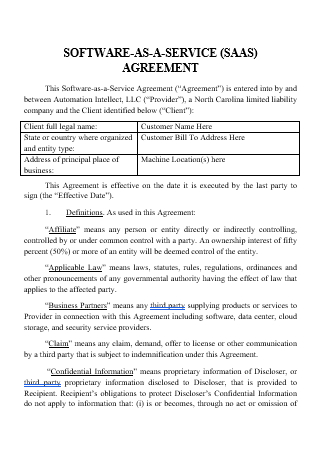
SaaS Agreement in DOC
download now
What Is a SaaS Agreement?
A SaaS agreement or software as a service agreement is a business document and binding agreement that lays out the terms and conditions of a particular software service or model. In availing of the agreement, software and data are in a centralized host, and users and guests have access to them over the internet. The SaaS agreement can have a heavy set of service elements, or it only allows access to end-users to view products and services that are licensed traditionally. There are no additional software or hardware requirements for a SaaS model or service because data is inside a system through an upload and stored inside the cloud. The SaaS agreement incorporates several other agreements, including licensing agreements, reseller agreements, subscription agreements, and service level agreements. Together, it defines the level of service that a software provider gives its customers. Different SaaS providers contain terms of service page that serve as the heart of the SaaS agreement. Since this type of agreement has legal implications, it requires careful consideration. Once it is in place, it seeks to eliminate any hassle that centers around conventional software licensing.
According to the statistical data from Statista regarding the public cloud services market size from 2017 to 2022, the worldwide public cloud service market has an expected growth rate and global revenue with an estimate of over 482 billion US dollars in 2022 from 396 billion US dollars in 2021.
Components of a SaaS Agreement
SaaS agreements have unique needs for each industry they serve. Meaning there are various clauses and provisions that it must contain with regards to different factors, including the industries, products, and services. Despite this, there are certain elements that a SaaS agreement must have for it to be a functional document. Below are the essential components to a SaaS agreement with their definitions.
How To Create a SaaS Agreement
There are different ways for a company to go about writing its SaaS agreement. As there is no standard format for the agreement, there are still factors to consider when developing the document. For every SaaS agreement that a company constructs, assessing variables such as the industry they serve, the services they offer, and the products they market is vital to creating a comprehensive document. Below is a step-by-step guide to help you create a SaaS agreement for your organization.
-
1. Determine the Terms of Agreement for the Service
The first step in writing the SaaS agreement is to determine the terms and conditions of the service, whether it is fixed or variable. If the company opts to operate in a fixed term of service, the company expects to get an upfront payment or direct debit agreement with the user. The variable term can be every month wherein the client must pay fees. In which case, the failure to pay results in a restriction of services for the following month. The underlying business model is a significant factor that the company must consider to determine the most appropriate terms for implementing the SaaS agreement.
-
2. Describe All the Services You Offer Effectively
The customers availing of the company services deserve the right to comprehend the SaaS services that they will experience. A way to inform clients is to direct their attention towards the list of services you offer through a company website or business flyer. It also helps to introduce a detailed description of the SaaS agreement as well. Whichever introduction you choose, there must be a guarantee that the customers have a clear understanding of the services the company will provide and agree to subscribing or availing of these services. It is advisable to consider the target audience and the amount of information they need to confirm their understanding.
-
3. Specify the Support and Maintenance Provisions and Use of Consumer Data
During the term of service, there are instances wherein the company needs to provide immediate assistance to fix bugs or errors and carry out maintenance schedules for better performance. As such, the customers availing of the service must acknowledge the plan, knowing how the company intends to do it. In informing the clients of a fixed maintenance plan, consider factors such as time zones, especially if there are clients in different locations. The SaaS agreement must also indicate the company’s plans to use consumer data, including data ownership, security, backups, retrieval, and host services. It is advantageous to consult data privacy lawyers to provide the company with a better understanding of collecting and storing user data, including the corresponding obligations to product consumers.
-
4. Retain Proprietary and Intellectual Property Rights
Ensure that the company retains all intellectual property and proprietary rights to the software service through the SaaS agreement. In completing the document, there must be a clear description of the possible modifications and improvements of the software resulting in a new intellectual property. Guarantee that the rights are in favor of the software provider.
-
5. Limit the Company Liability
Guarantee that the SaaS agreement indicates a clause that clearly explains the limitation of liability to clients. The statement must cover any issues relating to liabilities, including the amount of liability, the type of loss covered by the company, liability of third-party companies and websites, consumer protection provisions, among others.
-
6. Select a Governing Law that Covers the Agreement
The final step in creating the SaaS agreement is choosing the law that governs the document, including it in a governing law statement. Remember that the SaaS agreement is a legal document and a binding agreement concerning consumer usage of the software product. The SaaS agreement is also applicable to all clients that purchased the services regardless of their location. To avoid any future lawsuits with consumers living in different countries, ensure that the SaaS document identifies the governing laws according to the company’s current location.
FAQs
What should you look for in a SaaS agreement?
There are different elements in a SaaS agreement that a client or a supplier must look at when accomplishing the document. Look for the start and end dates, access rights, customer support, data ownership, subscription notifications, contract price, SLA, consumption and billing metrics, data handling and compliance, and license rights.
What are some examples of a SaaS?
There are many SaaS products available for various purposes. The most popular SaaS consists of Google Workspace, Dropbox, and Cisco WebEx.
Who owns the data in a SaaS agreement?
When it comes to the generated data, the software vendor owns and continually owns the software, including its base application, software codes, and all related documentation.
Forming a SaaS agreement is more of a safeguard to both parties, ensuring that the client and the vendor understand the terms and conditions of the arrangement. When writing the document, the software service supplier must clarify the content of the agreement with the consumer, including details like data protection, limitation of liabilities, and customer support. Start constructing a draft of the SaaS agreement with the help of the samples available in the article above.
